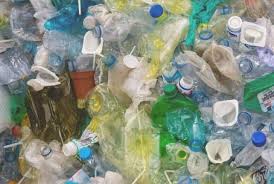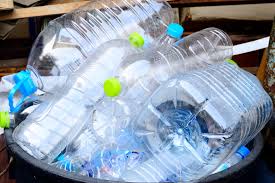The success of recycling depends on everyone, from the person designing the product to the person throwing it in the trash to the person collecting waste to the employee working in the recycling facility.
Recycling is a complex system that is driven by market demand, price decisions, and local regulations. The way we use and dispose of the products we buy determines their value and quality after use. We consumers have a much more important role than we might think.
For many people, environmental awareness starts with the recycling mark and ends with the recycling bin. For some of us, the act of simply putting things away in a big box marked “recycling” is sufficient to make us feel as though we’ve made a difference.
Plastic garbage has long been a major issue because it has caused both environmental and health concerns. Knowing the different types of plastic and the reasons we need to pay closer attention to our domestic recycling container are therefore essential.
Plastics found in thermoset plastics generate irreversible chemical connections, making it impossible to recreate them using the same manufacturing technique. Initially, thermoset plastics employ man-made raw resources while thermoplastics are made from organic raw materials like petroleum, wood, and coal fossils.
Read Also : Proper Waste Reduction Process
Cling film, blister packaging, plastic-coated wrapping paper, composite plastic, bio-plastics, and polycarbonate are examples of popular non-recyclable plastics.
Typically, thermoset plastics are made from a mixture of petrochemical resins that, when cross-linked and cured, establish bonds that are impossible to break.
These bonds often referred to as “links” hold chemical chains in unique arrangements.

This makes it possible to mold thermosetting plastics without the use of additional ingredients (such as reinforcements or fillers) to make them stronger when used.
Among the different kinds of thermoset plastic are epoxy, phenolic, unsaturated polyester, and urethane.
The capacity to produce robust materials, frequently with high heat resistance and mechanical strength, which may not be achievable with thermoplastics, is a benefit of these plastics. Their primary drawback is that they cannot be recycled or used again.
Because they “cure” at temperatures higher than room temperature and subsequently harden when they cool down, thermosetting plastics are sometimes known as thermosetting plastics.
There are various ways to make thermoset plastics, but they are always made by chemical reactions involving monomers to which other chemicals are added. These reactions, known as polymerization reactions, are typically carried out using heated machinery like ovens or autoclaves.
The truth is that there are numerous misunderstandings when it comes to recycling plastic.
This is because recycling plastics is a very complicated process, and many different factors determine whether plastic can be recycled or not.
Environmentalists, governments, and organizations are particularly concerned about plastic trash since the vast majority of plastics are disposed of improperly, which pollutes the oceans, overburdens landfills, and harms the ecosystem. Recycling plastic is therefore essential for enhancing waste management strategies and the environment.
Plastics are sorted prior to recycling according to the type of resin they are made of, either manually or through automated mechanized processes, or even by color.
There are two primary methods for recycling plastic after sorting;
(1) Mechanical recycling: This involves washing, grinding, and melting plastic.
(2) Chemical recycling: Which involves dissolving plastic into monomers to create new polymers that can be reused.
Different plastic kinds can be more or less recyclable depending on how they were created; for example, thermoset plastics contain polymers that establish chemical connections that cannot be broken and cannot be recycled, but thermoplastics can be remelted and remolded.
Examples of non-recyclable plastics are:
▪ Thermoset plastics,
▪ Bioplastics,
▪ Composite Plastics,
▪ Plastic-Coated Wrapping Paper
▪ Polycarbonate
▪ Blister packaging
▪ Cling film
▪ PVC (Polyvinyl chloride)
Since polyvinyl chloride (PVC) is a soft, flexible plastic, a wide range of home items are made from it. PVC, which was invented in the 1930s, is frequently used to make furniture, trays, and toys for children, and tubing.
Reasons why it is impossible for the waste management sector to recycle all plastic
▪ Different types of plastic cannot be combined, despite the fact that they all appear to be the same because they require various handling techniques.
▪ The bottoms of various plastics have different numbers, thus effective trash management is essential.
Each number represents a different sort of resin, a chemical that is utilized to create that particular type of plastic.
▪ Each resin has a specific melting point, so it must be melted down at that point in order for it to be useful when recycled into a new product.
Only some types of resin are accepted by factories that melt down plastics and turn them into new products.
▪ There are various varieties of plastic polymer resin represented by each number.
The factories can match the resins to the appropriate melting temperatures by knowing what resins are present when those numbers are separated. So, yes, the figure is really significant.
In conclusion, we need to adopt a new perspective on recycling plastic. The fact is, as humans living on this planet, we have a great deal of duty.
The standard of the resources we possess is our responsibility. The responsibility for their depletion rests with us. Determining more effective strategies for lowering plastic consumption is crucial for this reason.
You need to take action now that you are aware of which plastics cannot be recycled. Then how can you assist?
Encourage people to follow your example by recycling as much of their plastic garbage as you can, paying attention to what the research has to say.
Read Also : Proper Waste Recycling Process
We can all work toward a truly sustainable future if we all make a conscious effort to recycle our plastics, one small step at a time.
Similarly, recycling plastic film (shrink wrap, packing pillows, plastic bubble wrap, flexible plastic food packaging, etc.) and plastic bags (trash, shopping, zip-lock, bread, wood pellet, etc.) is a significant issue for single-stream recycling.
This implies that in order to recycle them, you must take them to a designated location with the necessary machinery.

